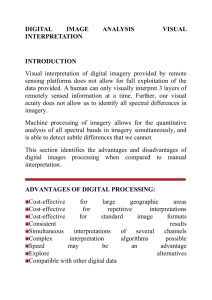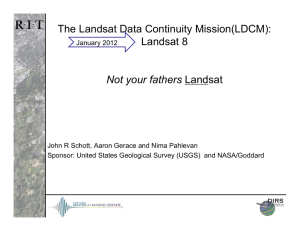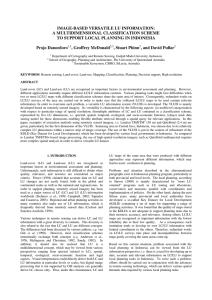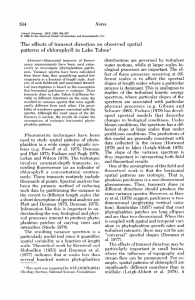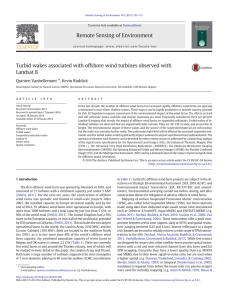Mapping of chlorophyll a concentration at 20 m resolution using
advertisement
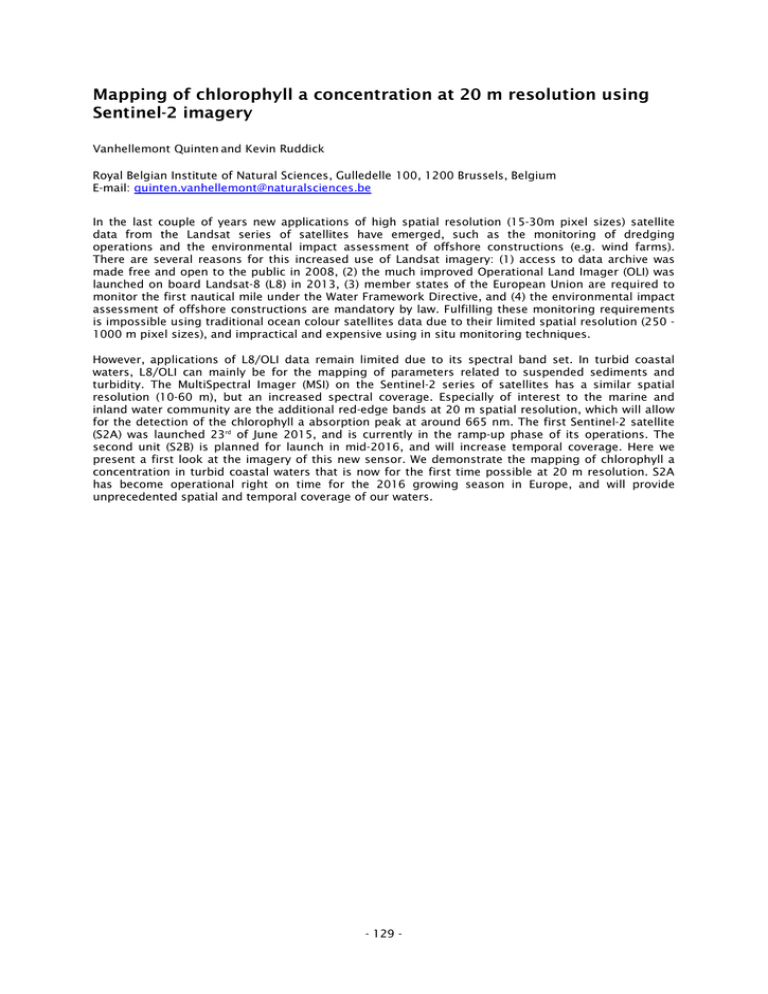
Mapping of chlorophyll a concentration at 20 m resolution using Sentinel-2 imagery Vanhellemont Quinten and Kevin Ruddick Royal Belgian Institute of Natural Sciences, Gulledelle 100, 1200 Brussels, Belgium E-mail: quinten.vanhellemont@naturalsciences.be In the last couple of years new applications of high spatial resolution (15-30m pixel sizes) satellite data from the Landsat series of satellites have emerged, such as the monitoring of dredging operations and the environmental impact assessment of offshore constructions (e.g. wind farms). There are several reasons for this increased use of Landsat imagery: (1) access to data archive was made free and open to the public in 2008, (2) the much improved Operational Land Imager (OLI) was launched on board Landsat-8 (L8) in 2013, (3) member states of the European Union are required to monitor the first nautical mile under the Water Framework Directive, and (4) the environmental impact assessment of offshore constructions are mandatory by law. Fulfilling these monitoring requirements is impossible using traditional ocean colour satellites data due to their limited spatial resolution (250 1000 m pixel sizes), and impractical and expensive using in situ monitoring techniques. However, applications of L8/OLI data remain limited due to its spectral band set. In turbid coastal waters, L8/OLI can mainly be for the mapping of parameters related to suspended sediments and turbidity. The MultiSpectral Imager (MSI) on the Sentinel-2 series of satellites has a similar spatial resolution (10-60 m), but an increased spectral coverage. Especially of interest to the marine and inland water community are the additional red-edge bands at 20 m spatial resolution, which will allow for the detection of the chlorophyll a absorption peak at around 665 nm. The first Sentinel-2 satellite (S2A) was launched 23rd of June 2015, and is currently in the ramp-up phase of its operations. The second unit (S2B) is planned for launch in mid-2016, and will increase temporal coverage. Here we present a first look at the imagery of this new sensor. We demonstrate the mapping of chlorophyll a concentration in turbid coastal waters that is now for the first time possible at 20 m resolution. S2A has become operational right on time for the 2016 growing season in Europe, and will provide unprecedented spatial and temporal coverage of our waters. - 129 -






